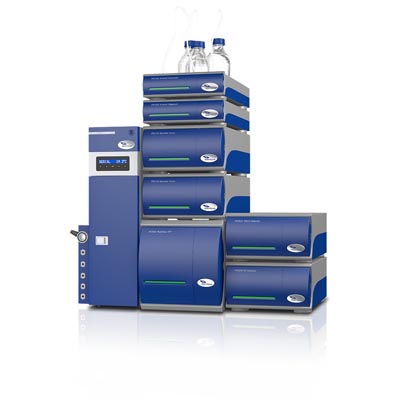Postnova Analytics report on how researchers from the
Institute for Health and Consumer Protection at the European Commission Joint Research Centre (Ispra, Italy) and the University of Ferrara
have used AF2000 Asymmetric Flow Field Flow Fractionation (AF4) system and Model S101 Sedimentation Flow Field Fractionation (SdFFF) systems in some ground-breaking research. |
Juli 2018

In the last 20 years
there has been a rapid increase of silver nanoparticle use in microelectronics, medical imaging, foods, pharmaceutical and consumer products, the last two especially because of the broad spectrum bactericidal and fungicidal activity of silver.
Because of their widespread applications, both the scientific community and industry are developing forefront research programs on silver nanoparticles.
In parallel, in order to answer to the public and regulatory concerns regarding the potential risks that nanoparticles may pose to the environment and to human health, the scientific community is working to find the most suitable and robust techniques to detect and quantify silver nanoparticles dispersed in environmental and/or complex matrices.
Researchers at the Joint Research Centre (Ispra-Italy)
and the University of Ferrara have evaluated different analytical techniques including SdFFF, AF4, centrifugal liquid sedimentation (CLS) and dynamic light scattering (DLS) to generate quantitative size information about suspensions of silver nanoparticles in the 20-100 nm range by taking advantage of the different physical principles on which are based.
The purpose of this work
was to access the suitability of this size distribution information suitable for use in relation to the implementation of the European regulations on the labelling of consumer products containing nanomaterials.
The comparative part of this study
found that both the Postnova AF2000 Asymmetric Flow Field Flow Fractionation (AF4) system and Model S101 Sedimentation Flow Field Fractionation (SdFFF) system were able to accurately size all silver nanoparticle suspensions in the 20-100 nm size range.
Further the study concluded that the two FFF techniques have the powerful advantage of being non-destructive, thus giving the possibility of coupling different detectors for unambiguous identification and quantification of silver nanoparticles. By comparison, Centrifugal Light Scattering (CLS) underestimated the average sizes of the silver nanoparticles.
However, Dynamic Light Scattering (DLS)
was the technique that provided the poorest performances within the context of this particular study because it tended to overestimate the average silver nanoparticle sizes. This study by the Joint Research Centre (ISPRA) paves the way for addressing the need for analytical methods to determine the number size distribution of silver nanoparticles in commercial products.
The Postnova AF2000
is a high-performance Flow Field-Flow Fractionation (AF4) platform for separation of proteins, macromolecules and nanoparticles.
Modular in design, the AF2000 incorporates the combined experience, expertise and technological advances from Postnova Analytics' nearly two decades of leadership in FFF. Incorporating a range of FFF modules in a single integrated system to provide universal separation, the AF2000 offers more flexibility, better performance and more robust results than any system before.
For further information
on Field Flow Fractionation please visit www.postnova.com/af2000-overview.html or contact Postnova Analytics on +44-1885-475007 / info.uk@postnova.com.
For further information on the work being undertaken by the Institute for Health and Consumer Protection at the European Commission Joint Research Centre (Ispra, Italy) please visit https://ec.europa.eu/jrc/en/science-area/health-and-consumer-protection
Founded in 1997, Postnova Analytics is the inventor and leading international supplier of Field-Flow Fractionation (FFF) systems for markets including biopharmaceuticals, polymers, materials, nanotechnology and environmental sciences. Leveraging its unique and patented modular FFF - Light Scattering Platform, Postnova has been able to provide high performance solutions to a wide range of applications. Today the company's growing product portfolio includes Flow FFF, Centrifugal FFF, Thermal FFF, Size Exclusion Chromatography (SEC), MALS and DLS Light Scattering. Postnova (www.postnova.com) is located and headquartered in Landsberg am Lech (Germany) and has subsidiaries in the USA, UK and Finland. These offices, in conjunction with a highly qualified and trained distribution network, provide informed local support to customers worldwide.
---------------------
Worldwide HQ
Postnova Analytics GmbH
Max-Planck-Straße 14
86899 Landsberg am Lech
Germany
Tel: +49-8191-985-6880
Email: info@postnova.com
Web www.postnova.com |